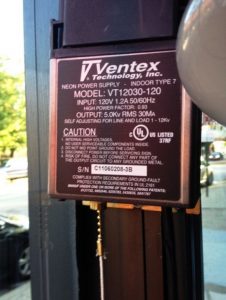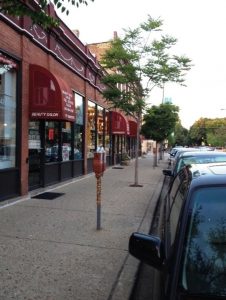 From the ARRL, original post here. 08/09/2016
From the ARRL, original post here. 08/09/2016
Police in Evanston, Illinois, contacted the ARRL Lab, after an apparent interference source began plaguing wireless vehicle key fobs, cell phones, and other wireless electronics. Key fob owners found they could not open or start their vehicles remotely until their vehicles were towed at least a block away, nor were they able to call for help on their cell phones when problems occurred. The police turned to ARRL for help after striking out with the FCC, which told them it considered key fob malfunctions a problem for automakers, although the interference was affecting not just key fobs but cell phones, which are a licensed radio service. ARRL Lab EMC Specialist Mike Gruber, W1MG, believes the FCC should have paid more attention.
“This situation is indicative of what can happen as a result of insufficient FCC enforcement, especially with regard to electrical noise and noncompliant consumer devices,” Gruber said.
Evanston authorities worried that a serious situation could develop if someone were unable to call 911, putting public safety at risk. They also were concerned that the RFI could be intentional and indicate some nefarious or illegal activity. Given the seriousness of this situation, Gruber contacted Central Division Director Kermit Carlson, W9XA, to ask if he could look into the matter.
On June 2, Carlson met with an Evanston police officer, her sergeant, a local business owner, and the local alderman, and he quickly confirmed that the 600 block of Dempster Avenue in Evanston was plagued with an odd RFI problem. Carlson determined that the problem prevailed along a set of eight on-street parallel parking spots in the downtown commercial district of the North Chicago suburb.
Carlson employed a Radar Engineers 240A Noise Signature Receiver and UHF Yagi antenna to survey the affected block. Since key fobs typically operate at around 315 MHz and 433 MHz, he looked on both frequencies. The survey identified several noise sources in the affected block, but in particular a strong signal in the middle of the block. The interference source turned out to be a recently replaced neon sign switching-mode power supply, which was generating a substantial signal within the on-street parking area just across the sidewalk, between 8 and 40 feet from the sign.
The problematic power supply interference also disabled Carlson’s cell phone when he was within a few feet of the device. Carlson anticipated that further investigation would show that the harmful interference could disrupt licensed radio services in close proximity. The troublesome transformer was not replaced, but the building owner agreed to turn off the sign should problems arise.
Carlson called the Evanston case “a particularly alarming example of radio interference,” especially since local authorities considered it a public safety matter. “This situation demonstrates the electromagnetic compatibility problems that are evolving in an atmosphere of noncompliant, unintentional RF-emitting devices,” he said.
A return visit to the area with calibrated antennas and equipment capable of measuring the radiated signal strength with quasi-peak detection is planned for later this year. Since the initial visit, several other instances of unexplained key fob malfunctions have been reported in the Greater Chicago area. — Thanks to Kermit Carlson, W9XA, and Mike Gruber, W1MG


This is becoming an ever increasing issue as more unscreened switch mode power supplies that cause excessive hash due to poor quality designs and poor quality components all in the name of lower costs, a lot of the relevant authorities around the globe are ignoring this issue, until more serious outcomes happen due to this we won’t see any movement on stricter quality control!